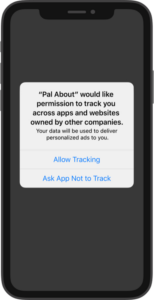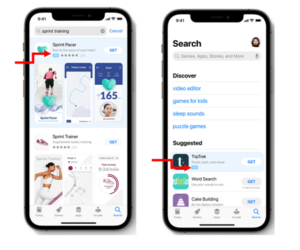
What’s the Buzz, tell me what’s happening!” All these words and phrases can make your head spin.
We not only live in a world where things change daily, but we abbreviate and shorten everything.
Take LOL. It does not mean “Love you Lots” it means “Laugh Out Loud”. How about “Ok” or “kk”?
When texting “Okay”, “Ok”, “k” and “kk” all have totally different meanings? Say what? Yes “okay” is a more formal response, but can sound sarcastic or stern, especially when paired with a period. “kk” is the most “acceptable” response which means “got it” or “Gotcha” and plus it looks cute. BUT, “Ok” or worse just “K”, which I use in my text conversations all the time with my husband because I thought it was cute, is actually “offensive” and considered rude and almost equal to flipping someone off. Who knew removing one letter could do so much? We have so much to learn.
Now when it comes to digital it can equally be frustrating being in the know with all the terms and abbreviations swirling around. Here is our digital dictionary to bring you in the loop.
Affiliate Marketing
In affiliate marketing, a brand (merchant) partners with affiliates (content creators, bloggers, websites, coupon deal sites, etc.) to promote their brand, products, sales, etc. Affiliates are paid a percentage of the sale they helped generate from their site.
Similar to influencer/endorsement marketing, where the influencer gets paid a flat-fee (usually) to promote the brand. The influencer might also get free products in return for their endorsement.
This is not a service Vici provides.
Back Links
Links on websites other than your own that go back to a page on your website. Backlinks are also called inbound links because they represent another website’s traffic coming to your own site.
The quality/quantity of your backlinks can help you rank higher in Google because backlinks are considered an indicator of how popular your website is with users.
This is a tactic we use in our SEO Appraoch.
Geo-Targeting vs Geo-Fencing
These terms are often misused but mean two totally different ways to target.
Geo-Targeting is the geographic area (“Geo”) you want to show your ads in, usually a zip code, large radius around a location, city, state, etc. and generally we would add behavioral targeting in this larger area.
Geo-Fencing is a TIGHT RADIUS around a location, less than a mile usually, no behavioral categories layered in, as tight as 500 feet or .1 miles.
A.I./Artificial Intelligence
Refers to systems or machines that mimic human intelligence to perform tasks and can improve themselves based on the information they collect.
For example:
- Recommendation engines can provide automated recommendations for products a person might be interested in based on users’ shopping habits.
- With our digital advertising AI we are using a specific type of AI called machine learning which is systems that learn or improve their performance based on the data they consume. It’s important to note that although all machine learning is AI, not all AI is machine learning.
A.I. can be used with these Vici products: Digital display, native, Social Mirror™, video pre-roll, OTT, and online audio.
Tracking Pixel![]()
A small piece of code placed on a website that allows the website owner to gather information about visitors on a website—how they browse, what type of ads they click on (to determine behaviors), device, browser, IP Address, or to track conversions or serve Retargeting ads. We use container tags to add and manage tracking pixels. Typically, multiple pixels are contained in our Container Tags.
Pixel vs Cookie? What is the difference?
Very similar and are often used together. Both can be used to track the behavior of users across websites.
The difference is how the information is delivered and where it is kept. Cookies are saved in an individual’s browser, such as Google Chrome. They cannot follow users across their devices, and users can block cookies or clear their cookies.
Tracking pixels send information directly to servers, so they do not rely on the user’s individual browser. Pixels are able to follow users across all of their devices, and users cannot disable pixels like they can disable cookies.
Ad Exchanges
A technology platform that works with publishers and ad networks and purchases their impressions to then sell them to advertisers. Advertisers can purchase directly from an ad exchange, or access ad exchanges through a Demand Side Platform. We work with an estimated 444 Private Marketplaces (PMPs) and 1385 Ad Exchanges, through our Demand Side Platforms (DSPs) partners.
DSP/Demand Side Platforms
A technology platform that allows buyers to manage, purchase and optimize programmatic inventory from multiple ad exchanges and Supply Side Platforms (SSP) through one interface. Inventory can be purchased through real-time bidding or programmatic direct deals (direct deals between ad sellers and ad buyers). Vici uses multiple DSPs so that we can access any inventory we want regardless of what ad exchange of DSP a publisher has a deal with to sell their inventory. That’s better than having just one DSP because it means we can be tech agnostic and not put all our eggs in one basket.
SSP/Supply Side Platform
A technology platform that allows publishers (websites and apps) to manage and sell programmatic inventory for advertisers to bid on. SSPs connect to multiple ad exchanges and DSPs at once to maximize the opportunity to sell inventory.
Programmatic
The use of automated technology for media buying. Programmatic advertising encompasses multiple ways of placing digital ads. It includes things like Real-Time Bidding, Private Marketplaces (PMPs) and Programmatic Direct buying.
RTB/Real-Time Bidding
Real-time bidding (RTB) is an automated process where advertisers can place bids, in real-time, for specific display ad placements. RTB is a programmatic process, but not all programmatic advertising takes place through RTB technology.
Private Marketplaces
Advertisers can only access the private marketplace with an invitation. Typically, top publishers (websites and apps) do this and offer their ad inventory to the highest bidders among the select advertisers with whom they’ve done deals granting access to inventory not available on open auctions and premium access at a lower price.
Programmatic Direct
It is a very similar model to the private marketplace, with the exception that advertisers and publishers agree on specific inventory based on a fixed CPM (Cost Per Thousand). Because the CPM is predetermined, there is no bidding process involving other publishers.
Vici uses all these types of programmatic. Vici does programmatic, real-time bidding and has dedicated digital buyers for campaign check-ins and optimizations.
Third-Party Data
We integrate with top 3rd party data providers like BlueKai, Eyeota, Factual, Lotame, and Oracle, so almost any audience we want to target is available to us through these data provider companies. This data is layered over the ad inventory we bid on.
Isn’t third party data going away?
No, it is NOT going away. Third-party data providers collect info in many types of ways, not just targeting through cookies. Census data is third party data, credit cards selling purchase data to them, public records, direct mail lists, magazines selling their subscriber list to data companies is all third party data. These have nothing to do with third-party cookies.
Third-party cookies ARE being phased out. Safaria and Firefox already block them. Chrome will start blocking them in 2023. Other tracking mechanisms are being tested to replace cookies that offer better privacy.
Some businesses may say they only use our own first-party data and that is better. But, it is not really better. It just means the only info they have is about their own subscribers/members.
Third-Party Cookies
Tracking pixels (code) that has information about a website visitor that is then shared with another company (not the company that owns that website). OR another way of saying it is information about a user that is tracked by websites other than the one you are currently visiting. For example, Retargeting and Conversion tracking uses third-party cookies.
- Third-party cookies are going away
- Not all of our products use third-party data. Mobile Conquesting, OTT with On-Site Visit Tracking, Facebook & Instagram, and Amazon Targeting (display, video and OTT) are all first-party data each of those companies has collected about their users.
First-Party Cookies
Tracking pixels (code) that has information about a website visitor that is used by the website (or app) that the user is on. For example, filling in your username and password automatically because you’ve told the website to save your login – uses a 1st party cookie.
For example, a website publisher can still collect behavioral data about its users – what they click on, what content they engage with, etc. – but the website publisher (or app) can’t SHARE it with other companies without the users consent (like clicking on a button that asks you to allow cookie tracking).
- These 1st party cookies are not going away
Google Business Profile
The new name of Google My Business. This is an online dashboard where businesses can login and tell Google information about their business. Google uses this information to populate knowledge graphs, Google Maps, Google search results. Sometime in 2022 Google will retire the online dashboard and businesses can update information right on their Google listing or in Google Maps.
AVOD
Ad-supported Video On Demand” are streaming platforms (Tubi, Pluto, YouTube, Crackle) that make their money off ads in between their content. As a result, the platforms are free for viewers. Ads run between the content. In other words, if you are watching a streaming program for free, it’s AVOD. This is our OTT inventory.
SVOD
Subscription Video On Demand are streaming platforms (Netflix, Disney+, Discovery+) whose content requires access to a paid subscription, and typically (although not always) doesn’t have ads.
Addressable TV
Serving different ad content to different audience segments watching the same TV program on IP connected TVs and set-top boxes of cable companies or satellite providers (Comcast, DIRECTV, and Dish). Targeting is limited to the subscription data the company has access to.
Linear TV
Traditional television viewing. In order to watch a show, the viewer must tune in (or DVR) a specific channel on a television at an appointed time. Viewers access linear TV via cable or satellite or through over-the-air broadcasts. Basically, the way we ALL watched TV many years ago before streaming was introduced.
ATT

App Tracking Transparency was introduced for Apple mobile devices using iOS 14.5 and higher.
It requires apps (although not websites) to ask the users permission to track information
and share it with other websites and 3rd parties. As of November, 2021 87% of iOS Apple mobile devices
are running iOS 14.5 or higher and of those, 38% are opting-in, and 62% are opting-out.
Privacy Sandbox
Launched by Chrome in 2019, it is a collaborative, open-source effort to develop technologies to replace third-party cookies with alternative tracking methods that preserve one-to-one privacy. Over 30 proposals have been or are being tested.
Private Relay
Safari browser users will now have their IP address hidden when browsing on Safari. Apple will do this by re-routing the server requests which will conceal the identifying headers and IP address. This update inhibits a client’s ability to send geographically targeted email marketing messages.
Apple Mail Privacy Protection
Inhibits the ability to accurately track open rates of Apple Mail users. Apple Mail will pre-load script and code data when the email is received, rather than when it’s opened. Open rates will look like they are significantly higher, but it will be impossible to tell whether or not more people are actually opening your emails.
Hide My Mail
Users with Apple iOS 15 or higher can create a ‘disposable’ email address when interacting with businesses — like filling out a form. This is basically a fake email address that will route messages to the real one, but it prevents the business that is sending the email from knowing or verifying the subscriber’s real address.
Privacy Policy
Any website that collects ANY information (does Retargeting ads, has a contact us form, uses Google Analytics, has e-commerce) must have a privacy policy on their website. It should include what information is collected, how it is stored, how it is used, and how it is shared, or the website owner is subject to fines.
Secure Website
 Websites that are secure have an SSL Certificate, meaning any data being passed between web servers and clients is encrypted. If a website is non-secure, any information a user inputs on the page (e.g., name, address, credit card details) are not protected and can be stolen. A secure website begins with https://. To run an Amazon campaign, the client’s website must be secure.
Websites that are secure have an SSL Certificate, meaning any data being passed between web servers and clients is encrypted. If a website is non-secure, any information a user inputs on the page (e.g., name, address, credit card details) are not protected and can be stolen. A secure website begins with https://. To run an Amazon campaign, the client’s website must be secure.
Ad Trackers
Collect data from online ad campaigns by using tracking pixels on ads and websites/apps.
HTML 5
Instead of just a flat image or text, HTML5 ads (also called Rich Media) can include graphics, animation, video, sound, and interactivity with the user. Some ad exchanges do not accept these types of ads.
VCR
Video Cassette Recorder? NO. Video Completion Rate. This is what percentage of the video ad was watched (25%, 50%, 75%, 100%). Vici will include for video products that report this information.
KPI
Key Performance Indicators are quantifiable goals that help an advertiser to track and measure success. It should measure what is most important to an advertiser. Clicks are not a good KPI, but conversions are.
Ad Verification
The process that advertisers take to quality check their ads and digital media from a safety, transparency, and accountability point of view. Ensuring their ads are served within brand-safe environments to maximize viewable and valid (fraud-free) impressions. This is achieved by displaying the right ads in the right context, at the right time to the right audience.
CPC/Cost Per Click/Cost Per Action
Instead of paying per ad impression served, the advertiser pays when the user clicks (Cost per click) or paying when the user does another action such as a click conversion or view through (Cost per action). It is the total cost of an ad campaign divided by number of clicks (or clicks + click conversions + view throughs).
CPI
Cost Per Inquiry, (sometimes called Cost Per Lead) is a marketing metric that is the total ad spend divided by the number of inquiries (or leads) received.
For example, a company spends $2,000 on an ad campaign in a month. The campaign results in 100 phone calls or contact form fill-outs. The CPI is $20.
What’s a good CPI? Depends on the value of what your client is selling.
CPA
No, in this instance we are not talking accountants. CPA – Cost Per Acquisition is a marketing metric that measures the cost to acquire one paying customer from an ad campaign. It is the total ad spend for a campaign divided by the number of customers who’ve purchased.
For example, if you spent $2,000 a month and got 8 new customers your Cost Per Acquisition in $250.
What’s a good CPA? Depends on the value of what you are selling. Averages are anywhere from $200-$1,000.
CLTV
Customer Lifetime Value (sometimes abbreviated as CLV) represents the total earnings from a customer over the duration of their relationship with the business. It is Average Transaction Size x Number of Transactions x Retention Period.
For example, if the average sale is $500, the average customer buys 4 times a year and the average customer stays for 3 years the CLTV = $6,000 (500 x 4 x 3)
Advertisers will use this number to determine what is a viable Cost per Acquisition they should spend.
ROAS
Return On Advertising Spend, is a marketing metric that is total ad spend divided by revenue generated by that ad spend, expressed as a ratio. For example, a company spends $2,000 on an ad campaign in a month. The campaign results in revenue of $10,000 (client would need to track this). Therefore, the ROAS is a ratio of 5 to 1 (or 500 percent) as $10,000 divided by $2,000 = $5.
For every dollar that the company spends on its advertising campaign, it generates $5 worth of revenue.
What’s a good ROAS? 3:1 ratio is considered a good ratio.
Apple Search Ads
Ads for apps that appear in search results in the Apple App store.

Set-Top Box
Connect to TVs for internet access and convert digital video signals into TV signals. For example, Apple TV, Fire TV, Android TV, and Roku boxes convert video from Netflix, Hulu and other providers into TV signals.
Algorithm
An algorithm is a set of instructions for machine calculations that learn and adapt over time. This data is leveraged for improved analysis to generate more efficient and effective digital ad campaigns.
Point of Attribution
This is also referred to as “last click” or “last touch” or “last point of attribution.” It is the last step the user took before converting. Attribution models should be multi-touch if employed.
For example, a person sees a video ad for Tom’s Bakery and decides to go there. He can’t remember the address. He Google’s Tom’s Bakery and sees a PPC ad on the search page that he clicks, and he lands on the client’s website and goes to the Contact Us page. That conversion would get credited to the PPC ad even though the video ad is what initially got the user’s interest.
UTM
Urchin Tracking Module (UTM) codes are snippets of code — attached to the end of a URL — used to measure the effectiveness of digital marketing campaigns. They are also used to pinpoint specific sources of traffic to your website. UTM codes, at a minimum, include a traffic source, a medium, and a campaign name. These codes send information back to the advertiser’s Google Analytics.
EXAMPLE:
http://www.client.com/services?utm_source=DynamicDigital&utm_medium=DisplayAd&utm_campaign=WinterSale
UTM Codes can be great, but the tracking is not perfect. Make sure you research how these might work for your digital campaign or any discrepancies that could be involved.
Facts.
Short for true, or this is true, or I know this is true, or I agree, or “word”.
Just thought we would end your buzzword and acronym education today with a FUN buzzword. My teenager says this all the time at the end of our conversations. And now ladies and gentlemen, you are much smarter in the world of digital buzzwords and acronyms. Facts!

